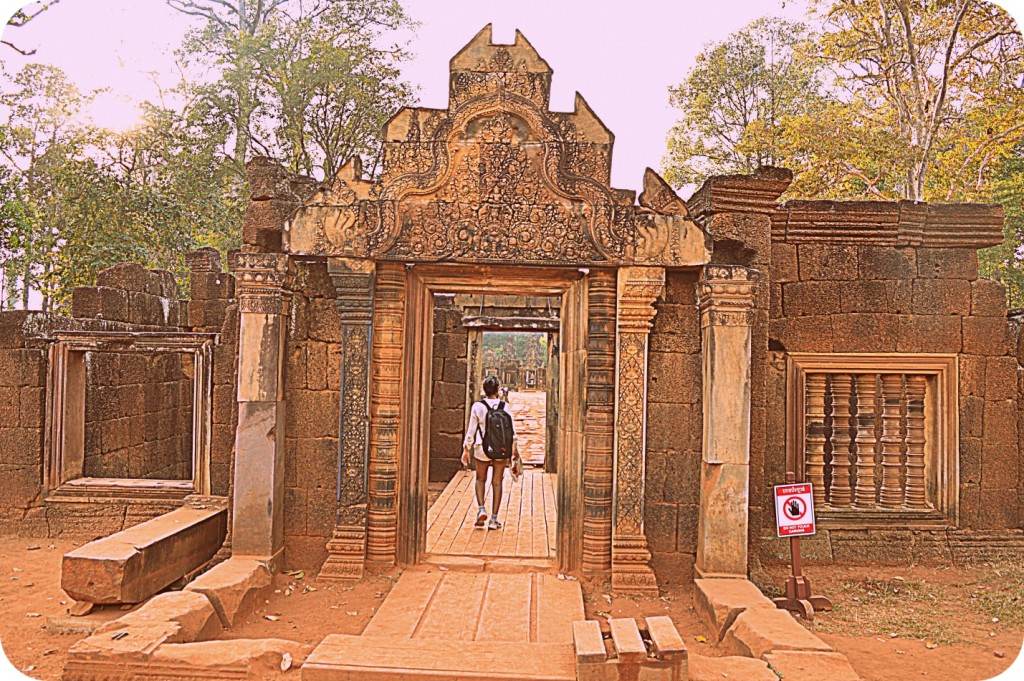
Urban Monk in Rural Cambodia
Urban Monk in Rural Cambodia
For some of us, Yoga is a private communication of who we are and what we are. Meditation is an integral part of this communication. I mostly meditate from home remembering the natural forces of death and destruction.
Remembering the force of destruction enables me to note how destruction prevails in the world, and it is fear of it that makes me weak and not the force itself. In a recent article published by the BBC, Eric Weiner makes an interesting find on why the Bhutanese people are the happiest in the world – by contemplating of death almost everyday the Bhutanese people become more attuned to positive thoughts.
At times, I recite the Maha Mritunjaya Jaap, an ancient verse, which reminds me how life inevitably succumbs to death, the triviality of material pursuits and how eventually the goal of life is to seek moksha and be free from the circle of birth and death. The verse really is about thinking about the cucumber – to note how it is not affected by the dirt it grows in. The cucumber symbolizes not being affected by the ‘surrounding dirt’ of trivial pursuits, even though we live in a world that is fraught by these pursuits.

Remains of a 10th century Shiva Linga at the Banteay Srei. The Shiva Linga is a Hindu form of worshipping the force of destruction.
Up until recently, I enjoyed these realizations mostly while meditating at home. Meditating at home has never really let me down, and lets me balance the quiets of my inside with the noise of the outside.
But it was when I was at the temple of Banteay Srei, a 10th century temple in Cambodia, that I realized what it feels like to belong to the world, and immerse myself in thoughts that one day I too will be a part of it. I came to understand what it truly is to meditate in the lap of nature amidst the cradle of history that reminds one of destruction and eventual rebirth. Unlike all the other temples in Cambodia, the Banteay Srei is dedicated to Shiva or the force of destruction rather than Vishnu, the symbol of creation. It tells the story of a temple that was grand once upon a time only to be destroyed and reborn once again through excavation.
The temple of Banteay Srei proved to be a special venue for meditation for me. What it provided me was the perfect fodder for meditation – a jungle that had once been mighty enough to consume the entire temple and a sound of humming insects that silenced everything else. For the first time in my life, I came to know what it was like to meditate in the lap of a forest, and in the precincts of a temple, that had lived, and then succumbed to the forces of destruction – something I construed as the force of life itself. With these realizations, I could proceed peacefully to the world inside me through meditation. I had a context and a vision about life and destruction.
After an undisturbed meditation for a good twenty minutes, I felt that I was incredibly fortunate to have had this experience. The breed of humans meditating in ancient temples is a dying one. Historic temples like the Angkor Wat or Ta Prohm in Cambodia lie inevitably torn down by the lines of tourists making it impossible to find quieter spaces where one can sit down and meditate.
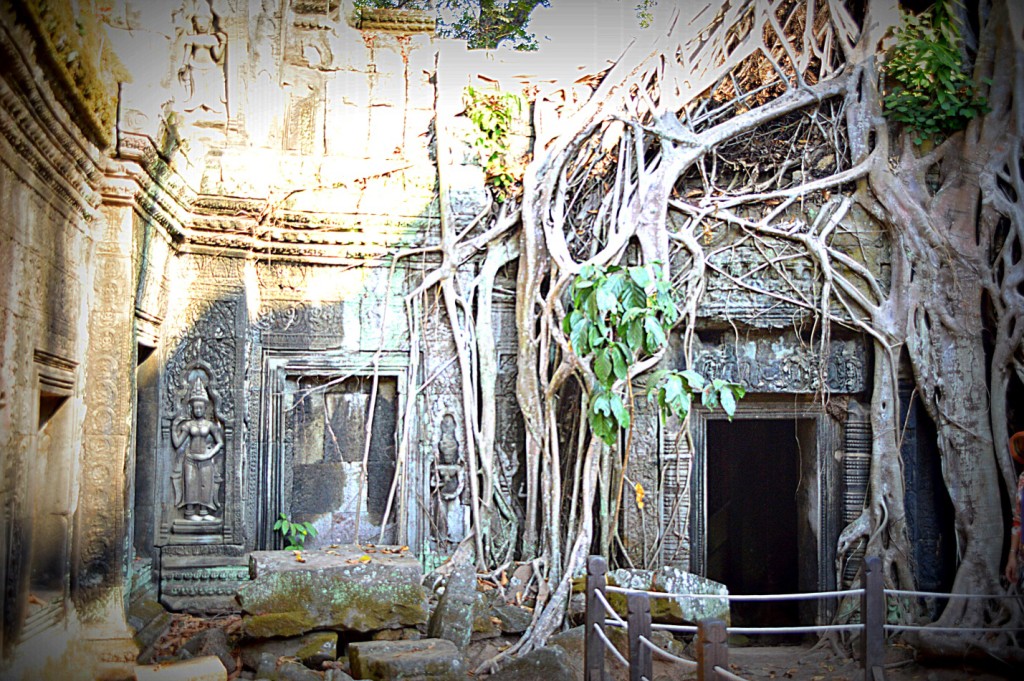
A view of the Ta Prohm temple in Cambodia where the movie Tomb Raider was shot. Given the increased tourism to the temple, it is rare to find a monk meditating in it anymore. Yet the interesting takeover of the temple by a Banyan tree makes it a wonderful place of meditation.
So where could I go to get an experience similar to what I had in Banteay Srei? I didn’t and still don’t have an answer to this question. I realized that while tourism brings in necessary revenues for countries that need it, it also displaces monks who otherwise use these temples to brace nature and life simultaneously through meditation. Urban monks like me on the other hand are increasingly being driven inside concrete walls and manmade ‘nature sounds’ to meditate. Some of us are also losing nature as a context to meditate. Nature that helps us realize that control is futile – is being driven inside our closet.
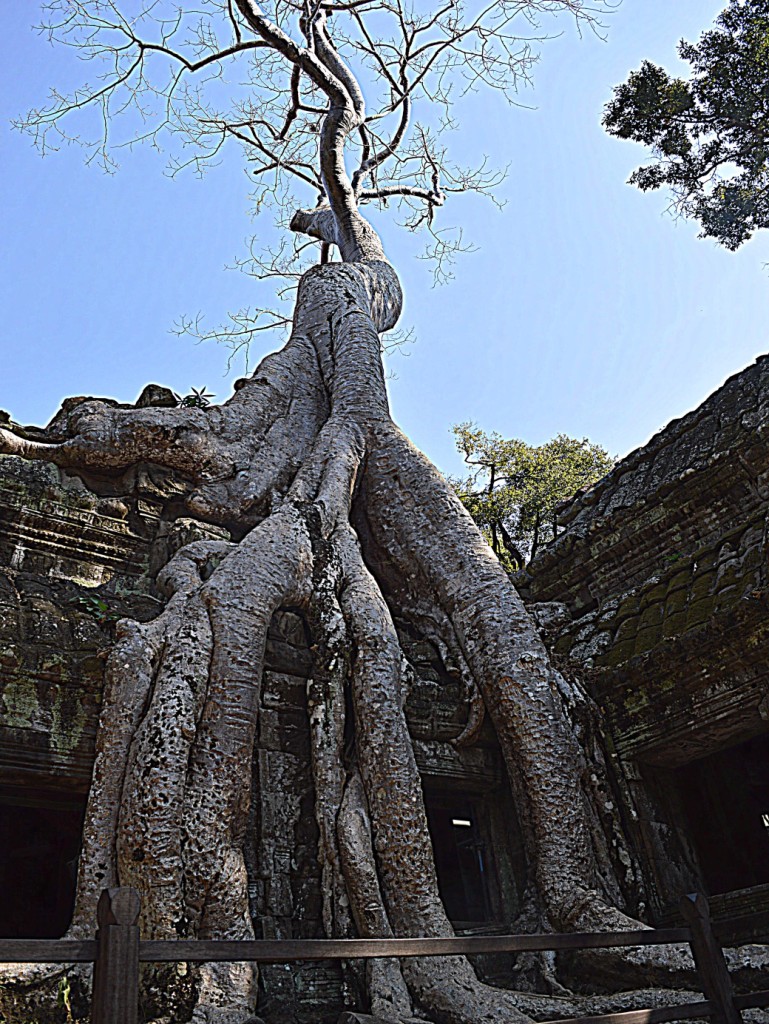
The Banyan tree overtaking the Ta Prohm or rather the perfect example of nature and spirituality coming together.
As I walked out of the Banteay Srei, I looked once again to the forest that had nurtured me and another monk who stood out to be a dying species. We might need to do something about it, I thought to myself as I walked away. Writing a few words about it would certainly help.
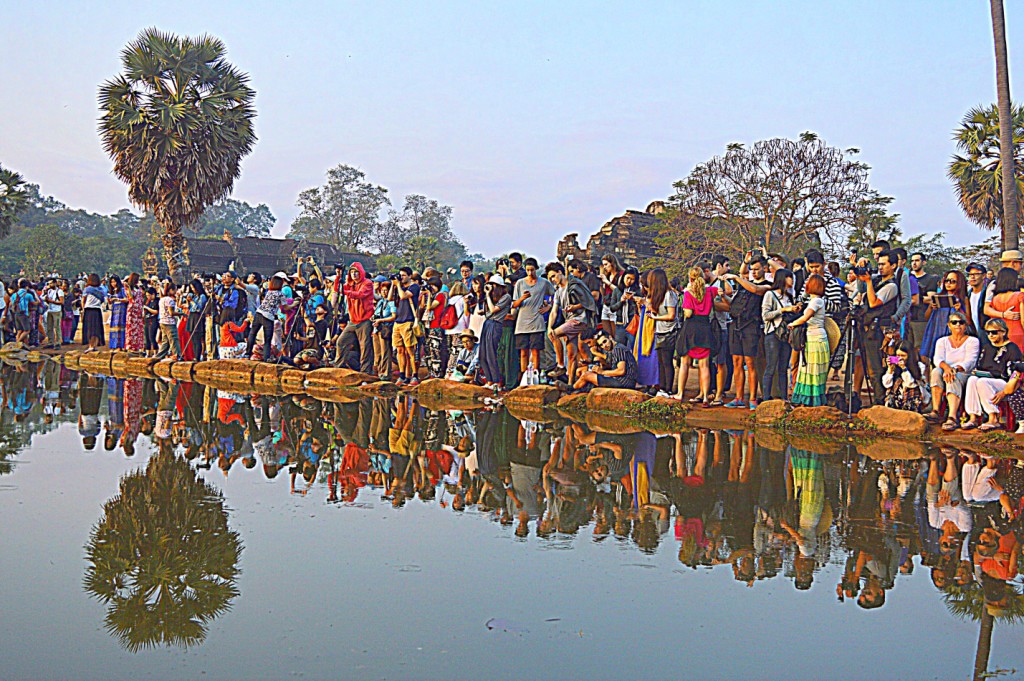
Tourists outside the Angkor Wat temple at 7 am in morning. The crowds continue to increase as the day progresses.
References: Eric Weiner, Bhutan’s dark secret to happiness (http://www.bbc.com/travel/story/20150408-bhutans-dark-secret-to-happiness)
(c) Apoorva Anubhuti


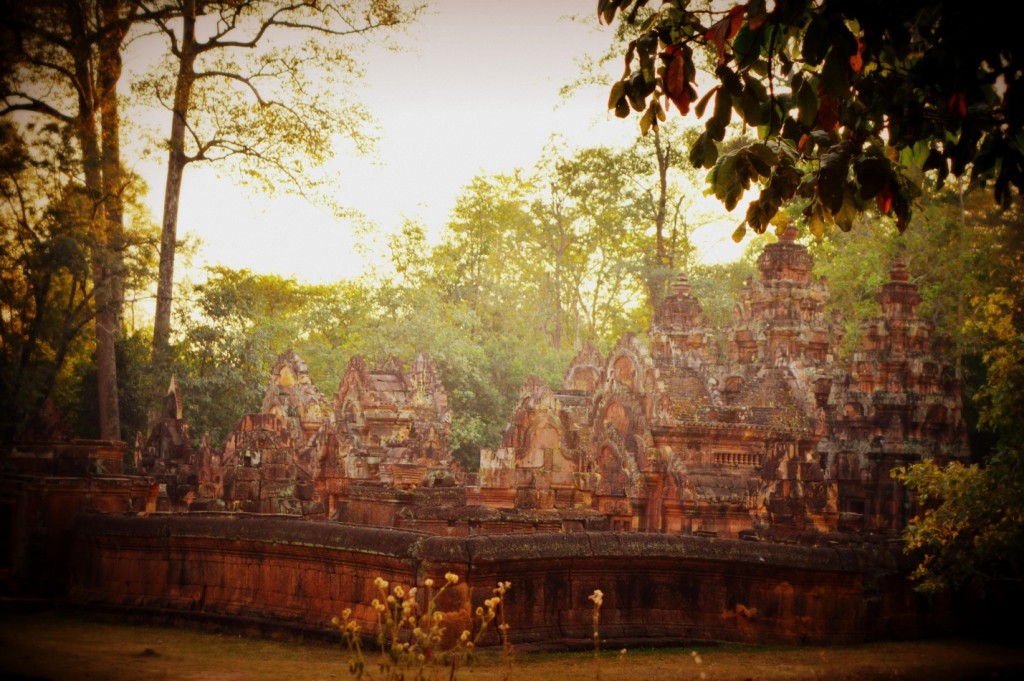
I remember visiting the temples in Cambodia, but my meditation practice wasn’t and still probably is nowhere near your level. Sometimes one forgets that these temples are places of worship rather that just “sites to see” and “a place to check off the list.”
With all the people I certainly was lost in the beauty and commotion of it all.
I relate to so much to your writing and thank you so much for taking the time to share it with the world.
~Brian
Apoorva,
I loved the part in your post about your reading of Maha Mritunjaya Jaap especially the part about the sentiment towards the triviality of material pursuits. I’ve read this in almost all of the yogic philosophy books.
How do you practice this in everyday life?
Aside from practicing mental “non attachment,” to possessions, I’ve also found that literally giving away items I own (clothing, shoes, etc.) is a great practice. The impact is twofold, one it gives items to someone who might be in need, and two it frees me from clutter & unnecessary possessions. Mentally emancipating 🙂
I’ve also just gone into a “no buy” mode, not buying any items aside from food.
How do you practice this?
I agree with Brian, I loved Angkor Wat but was there certainly as a tourist. It would be cool to spend a couple days at a lesser populated area of Angor Wat (perhaps in a tent) while practicing yoga, meditation, just relaxing and “being.” Soaking in the energy.
It was nice reading about your experience. Nature gives us incredible perspective. I love the quote, “Mother Nature doesn’t hurry, yet everything is accomplished.” Angor Wat proves that.
Thank you for this great post, hope to read more of your insights 🙂
~Paz